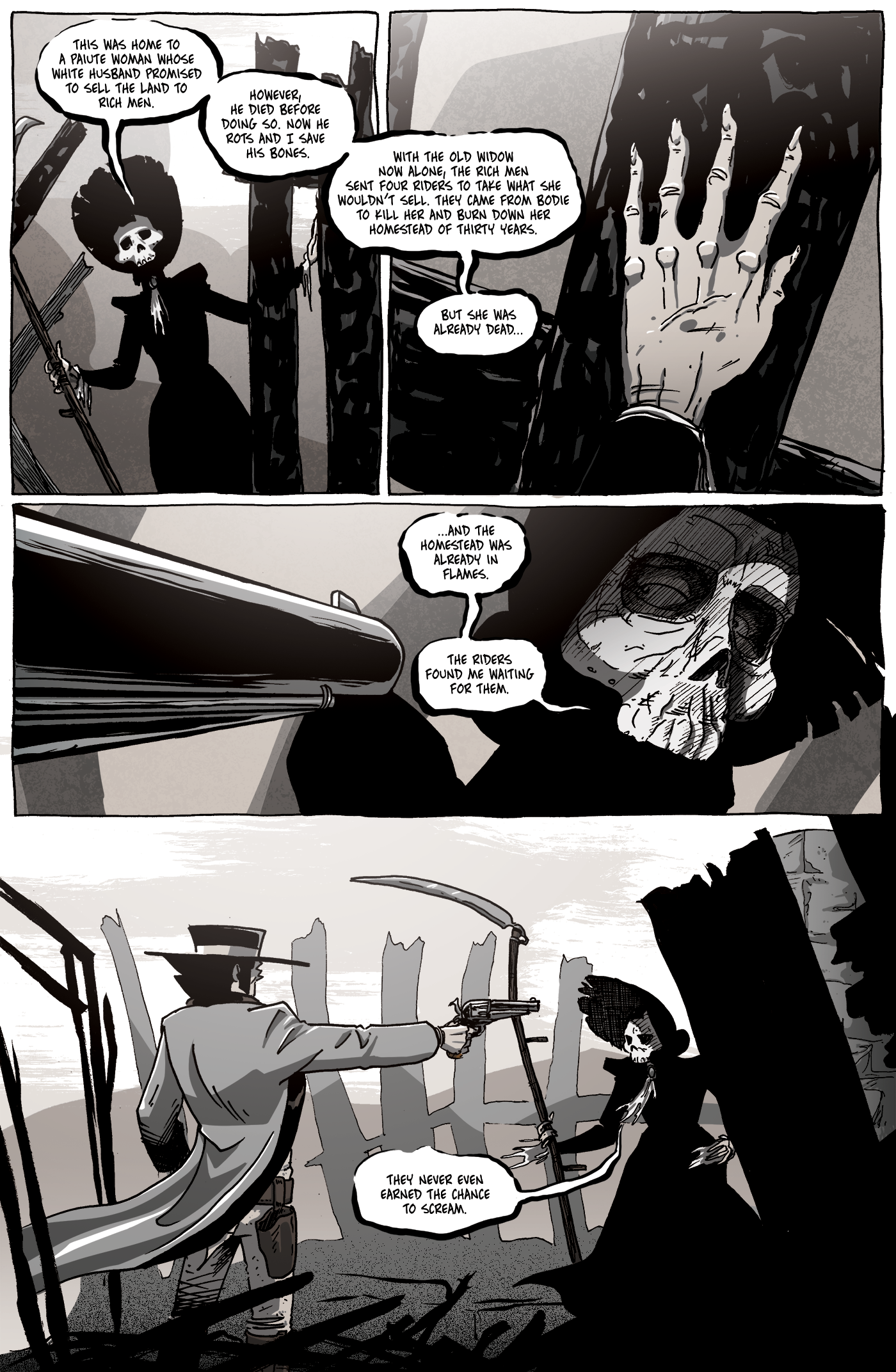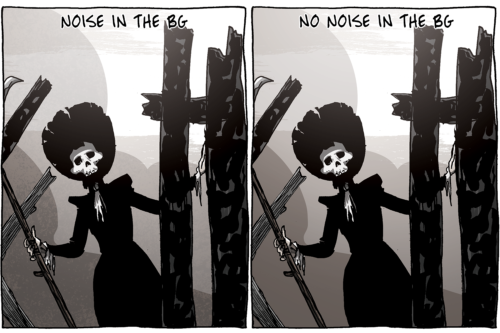The Unearned Scream
Though I started playing with it in Chapter 4, it’s this chapter––and I would say, perhaps, this scene––where I learned the value of noise.
By “noise” I mean adding an unspecific texture or grit to the imagery––specifically color. You can see it in the background shading of all of these panels; it can be clearly seen at the bottom of the last panel, a gradient of black specks reaching upwards from the bottom of the scene. This noise is meant to mimic the noise seen in photography––especially back when film was developed from rolls or disposable cameras. Noise adds a kind of hazy quality to the overall image. From what I understand, it’s basically the atmosphere between the camera and the subject playing with light, diffusing it and confusing the film a little and is often seen in low light conditions.
While noise is naturally generated in the photographic process, it is non-existent when making art. In other words, noise must be intentionally made, which is a fun inversion from photography.
There are a few ways I use it. One is to use textured digital brushes. I have a handful of brushes from providers like True Grit Texture Supply who specifically make brushes to dirty up an image.
Another way to create it is to use textured overlays on an image or a layer in the image, which is really popular––using high resolution scans of crumple paper, rusted metal, rotting wood, broken glass, or stained fabric can be overlaid and dropped in opacity so that they’re barely seen but break up the colors a bit so the uniformity is gone.
There are also use some of the built-in tools and features of art programs (Photoshop, Clip Studio Paint, and Procreate, for example) that can create this effect. It’s all a matter of using only as much as you need and not overdoing it.
What I like about it is that creates a sense of verisimilitude without needing to be photo-real. Because it’s something seen in photographs, we associate the level of noise with distance and depth of field. Without it, a gritty scene like this one can be a little too pristine with pure colors filling the page. Throwing a little bit of noise onto the burned-out pillars and the background gives the scene the grunge it needs to, perhaps, make the difference clear between it looking like a Saturday morning cartoon and a serious, dark scene. It’s small but can go a long way to making the intent of the scene and the image clear.




Discussion ¬